Daylily yellow: characteristics of species and recommendations for growing

The yellow daylily is one of the most popular species in Russian summer cottages. When in bloom, its petals become a striking touch in any landscape, contrasting with other vibrant flowers and filling the garden with an even more sunny and summer atmosphere. True, toEach flower can please with its beauty only one day a year, for which the culture was called "krasodnev", but for the sake of this day, gardeners are ready to put all their efforts into growing this amazing plant.
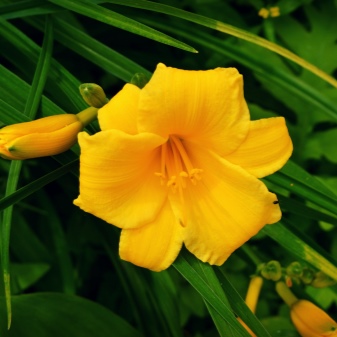

The best species and varieties
Daylily yellow
The culture is a shrub up to 1 m high, formed from beautiful thin xiphoid-curved leaves. Daylilies with yellow petals are both wild and hybrid, its varieties have their own differences and characteristics and are used to create amazing beauty of flower arrangements. Moreover, this species does not lose its decorative effect until winter.
Flowering is possible from the third decade of May to the second half of August. The daylight hours of one flower lasts from 7 to 21 hours, after which it no longer blooms. The peduncle forms up to 20 buds. In one day, 1-2 buds usually bloom, in rare cases, three blooms at once.
Withered perianths fall off in a couple of days and therefore do not diminish the beauty of the plant.

Lemon yellow
This species is distinguished by its large size - up to 105 cm. It blooms magnificently in early summer, the petals are painted in a lemon shade. It is characterized by fleshy roots and a large number of linear leaves. The flowers are large, the bud at the top is purple-black. The peduncle is usually slightly longer than the leaves.
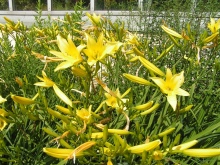

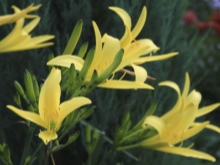
Brown yellow
This bush is up to 1 m high, and the yellow petals have an impressive brick tint. This species is appreciated for its unpretentious care, it quickly takes root in a new place and is indifferent to shading. It has many terry varieties.
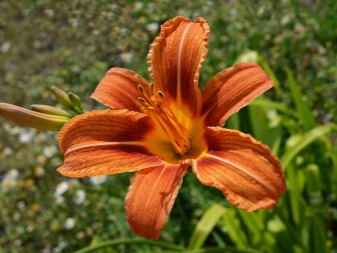
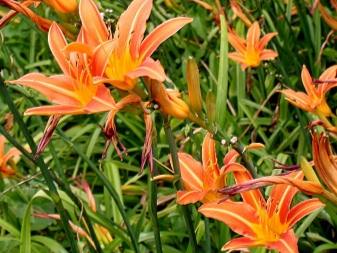
Middendorf
This is a dwarf species, the size of which does not exceed 60 cm. The yellow-orange flowers have a very bright, rich aroma. Flowering is long, and although each bud blooms for only one day, there are so many of them that this beauty can be observed until August. Flower diameter - 11 cm, length - 9 cm.



Landing rules
The advantage of the daylily is not only in its decorativeness and unpretentiousness to growing conditions, but also in its ability to reduce the amount of weeds in the flower bed. Its well-developed rhizome quickly forms shoots, the green mass gradually closes up, preventing the growth of weeds. Without a transplant in one place, the culture grows for 10 years.
This species feels comfortable in any nutrient soil. The most suitable will be a heavy soil with a humus content. If the soil is too poor, then it is diluted with compost mixed with sand, peat and mineral fertilizers. But it is better to refuse planting in clay or sandy soil, since clay does not drain moisture, and sand, on the contrary, passes it too well, that is, the plant suffers from an excess or deficiency of moisture.

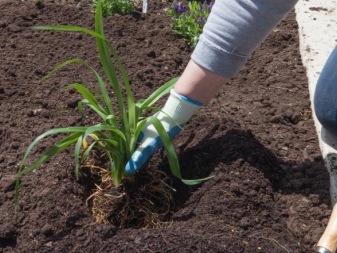
In general, this species refers to light-loving, but slight shading will not frighten the plant, although flowering may be somewhat weakened. If there is not enough space for planting, you can place the plants in containers. The planting procedure is as follows.
- Dig a planting hole.Keep in mind that a small sapling will soon become a sprawling shrub measuring 50-70 cm in girth. Considering these features, select the diameter of the pit. The recommended depth is 30 cm. If the ground is poor, then the depth is made deeper and the pit is filled with a special nutrient mixture.
- Pour a mixture of humus, sand and peat into the prepared hole. Some gardeners advise adding potassium and phosphorus to the composition.
- Gently loosen the soil from the seedling and rinse. If dry or damaged fragments of the root system are noticed, then they need to be removed, and the cuts should be treated with ash. You should also eliminate bad leaves, and shorten the rest.
- Lower the seedling into the hole and gently spread the roots over the surface so that they fit snugly against the ground.
- Fill the free space with the prepared mixture, but not completely.
- Compact the soil near the roots and moisten the planting site liberally by pouring water to the brim.
- Fill the hole to the end with the remaining mixture.
- Add a layer of peat or humus as mulch 1.5-2 cm.
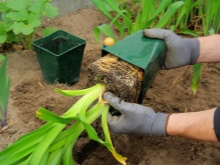

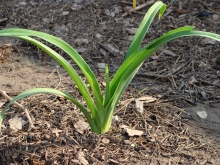
Take additional advice from gardeners for planting a yellow daylily.
- The most favorable time for planting is May or August. If planting is carried out between these months, then it is better to perform the procedure on a cool day. Planting too late is not allowed, since the young plant will not have time to adapt to new conditions before frost and may die.
- When the planting pit is moistened during planting and the water is immediately absorbed at this moment, it is recommended to add dry soil to the pit, once again compact the soil around the seedling and repeat watering.
- Low-growing varieties are placed at a distance of 60-70 cm from each other, higher species are planted at a distance of 1 m. Such a scheme will ensure the full development of each specimen.
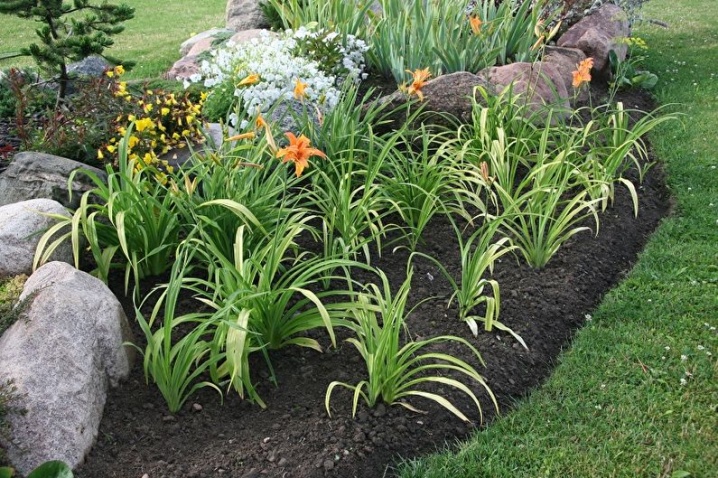
How to care?
Even a novice gardener can handle daylily care without any problems. Growing up consists of certain stages.
Watering
The yellow daylily does not like frequent and superficial watering. Humidification is recommended only during dry periods. Watering must be done at the root so that moisture accumulates in the ground. Drops should not be allowed to fall on flowers, otherwise they will quickly take on an unaesthetic appearance.
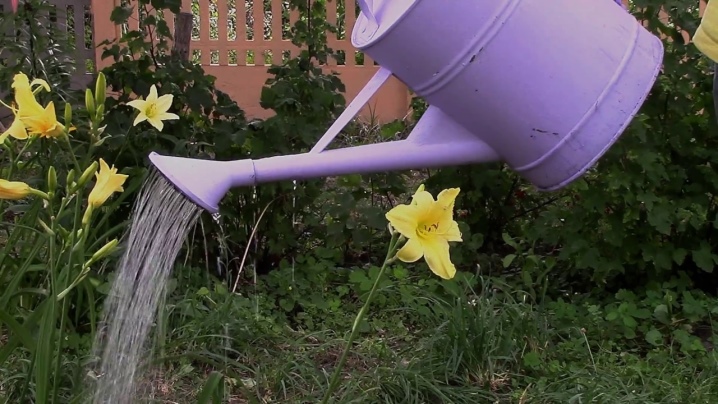
Top dressing
The crop needs fertilization in early spring during the regrowth of young foliage. Nitrogen-containing mixtures are suitable as additional food. Dry compositions must be scattered between plantings and repaired, and then watered well.
Another top dressing is needed a month after the peak of flowering, before the start of laying the buds. During this period, phosphorus-potassium agents are suitable, which contribute to growth and lush flowering for the next year.
You should also know that older specimens pull out more nutrients from the ground, and therefore more need high-quality feeding.

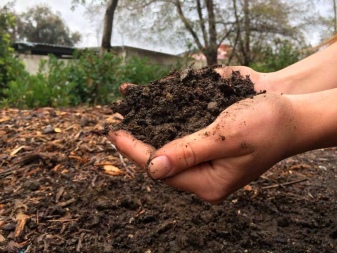
Pruning
Once flowering is over, the shoots should be removed. In case of cloudy weather, the flowers will accumulate moisture and cannot fall off themselves, so they need help too. Before winter, it is customary to cut off the aerial part, and the young leaves must be left.
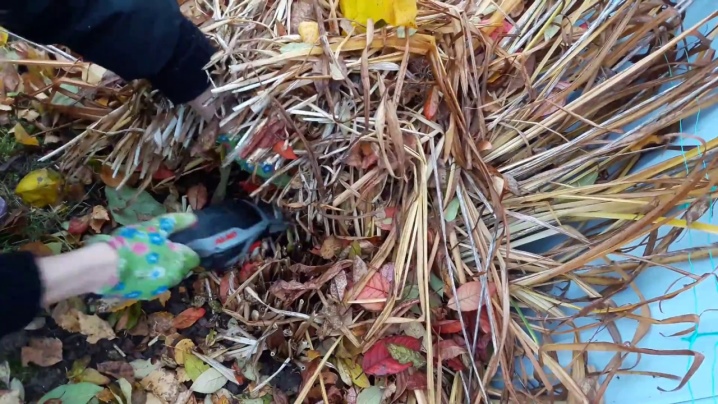
Loosening and mulching
Under a layer of mulch, the culture feels more comfortable. You can mulch with fine wood chips, crushed bark or dry peat. It is better not to use fresh sawdust for this. If mulch from wood chips is used, then the ground should be left open at the base so that future shoots can develop freely. The most favorable mulch is peat, lined with a layer of 2 cm.
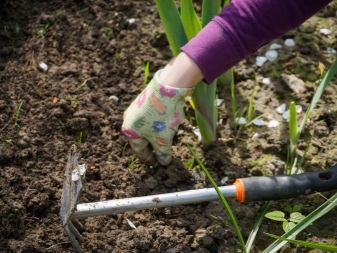
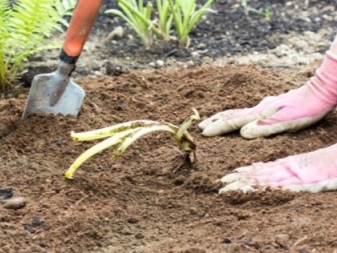
Diseases and pests
The most common ailment for the presented species is root collar rot. The disease can kill the shrub. The reason is waterlogging of the soil. Under the influence of the disease, the leaves soften and become covered with yellow stains.Having noticed the first symptoms, it is necessary to dig out the bush, remove all infected parts with a sharp knife and process the cut sites with a solution of potassium permanganate. Next, the affected specimen is dried and planted in a new place.
Of the insects, the lily mosquito loves to feast on the plant most of all. Its larvae prefer to feed on the tissue of flower buds. Under the destructive influence of the pest, the petals deteriorate and lose their beautiful appearance.
All buds affected by insects must be eliminated.
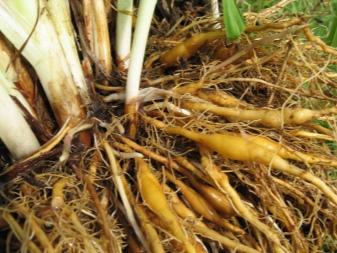
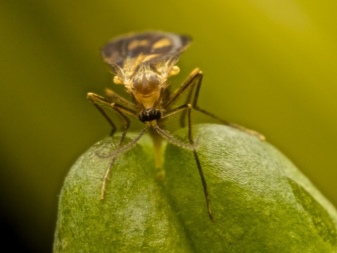
Examples in landscape design
The yellow daylily, planted next to the garden bench, looks very beautiful. Its pleasant aroma will allow you to relax and enjoy the moments of relaxation. If this is a low-growing variety, then it is perfect for decorating an alpine slide. Lemon-yellow views are picturesque against the backdrop of dark or red walls of the building.
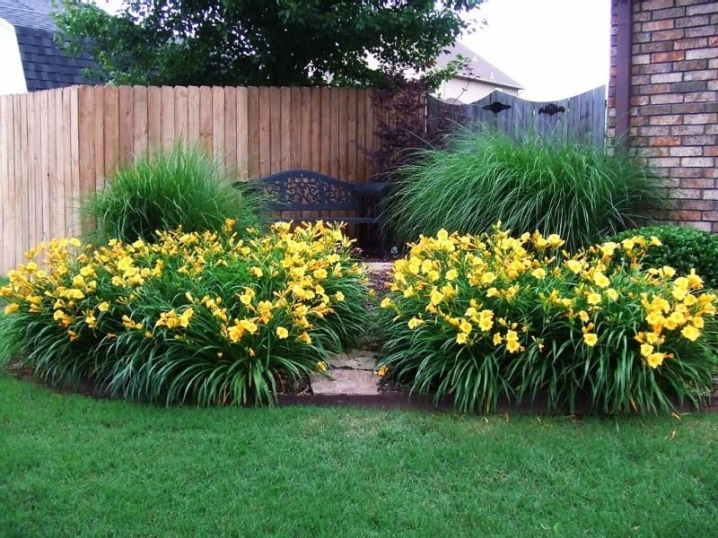
You can frame the garden alley with yellow flowers. This bush looks like a fountain with "shooting" jets, so it will harmoniously fit into the garden design when decorating an artificial reservoir.
True, it should be borne in mind that the culture does not tolerate waterlogging.
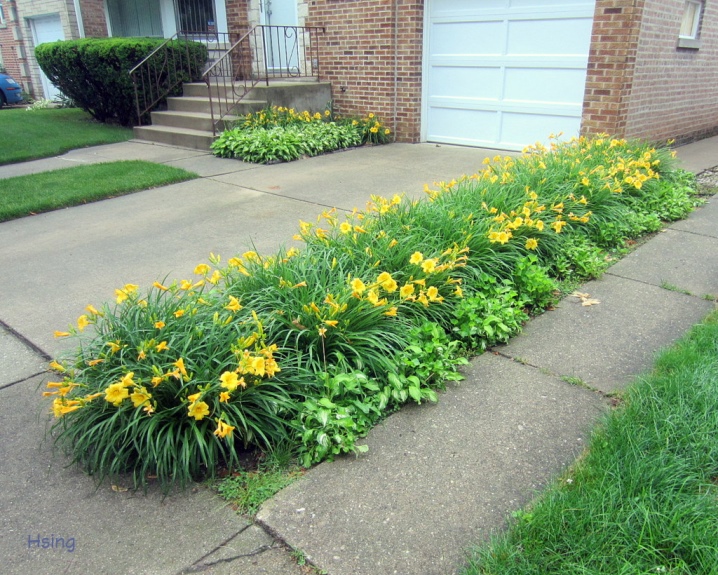
These flowers go well in a flower bed with hosta, phlox, irises and lilies. The culture is suitable for single and collective plantings, looks beautiful with shrubs in the background, and harmonizes well with large perennials. It is also possible to use it for decorating a rabatka in illuminated and semi-shaded places.
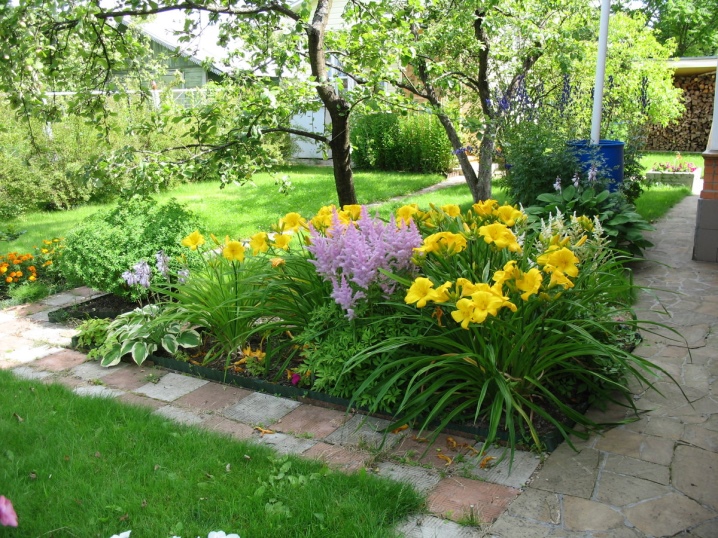
See below for more details.




































































































The comment was sent successfully.